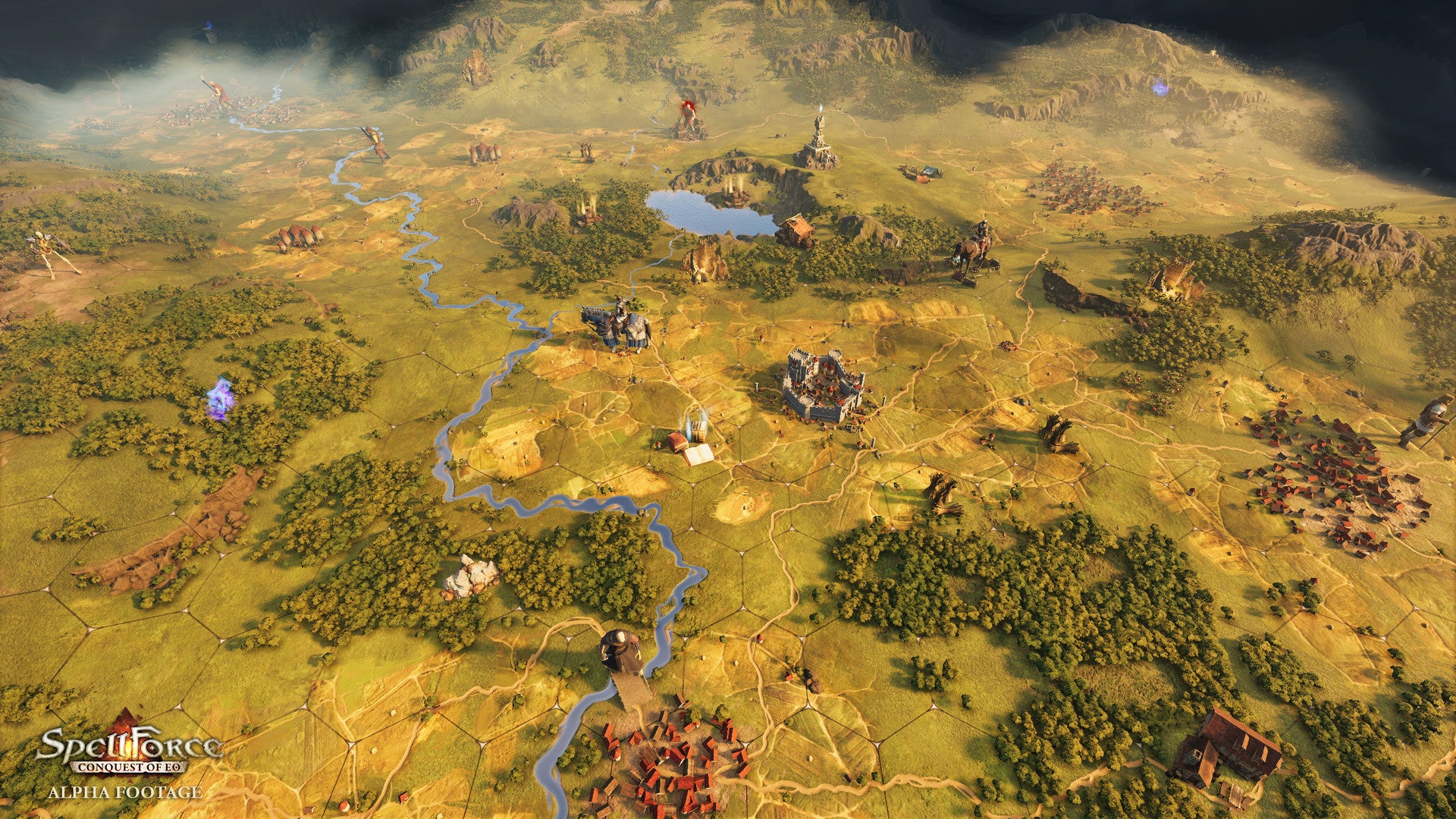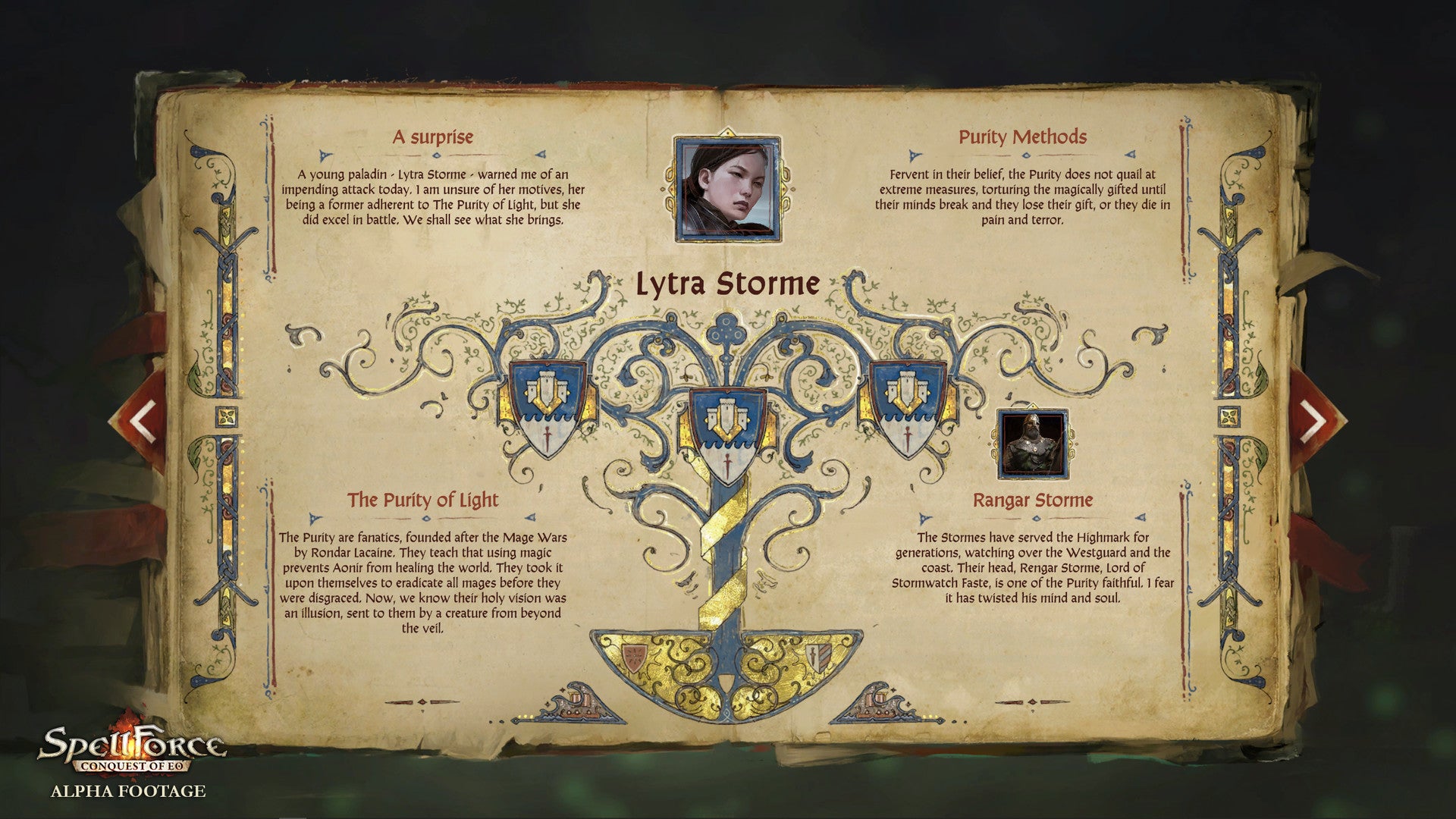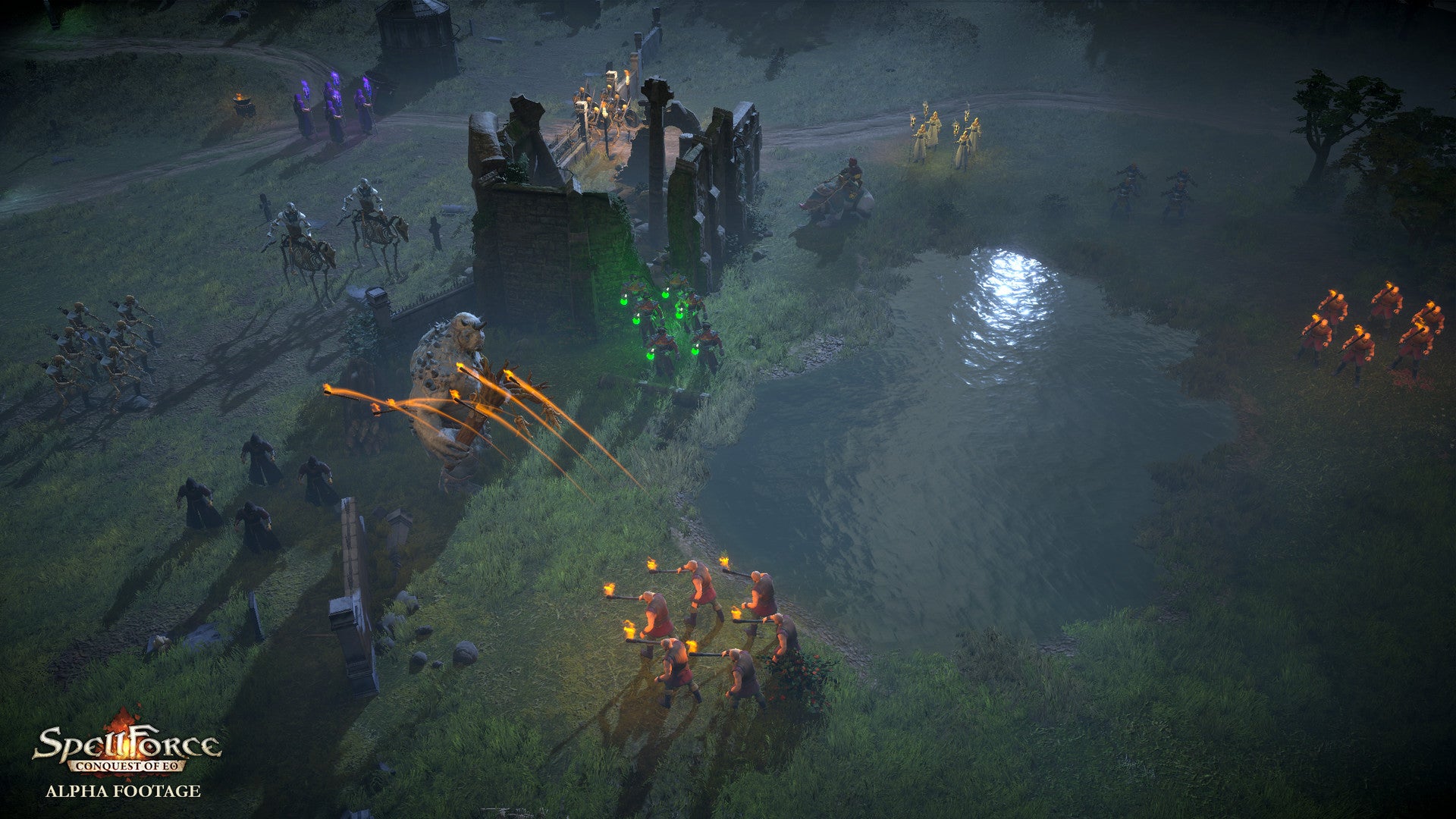Ahead of the announcement, developers Owned By Gravity invited me to take a sneaky peek, and I was treated to a hands-off demonstration from producer Jan Wagner. While the game was in a pre-alpha state, it was already looking pretty swish, especially the rather lovely (and lovingly hand-crafted, I later discovered) world map. It all looks very 4X-like, and all four of the exes are present and correct in varying amounts - but there is one significant departure from the formula that Wagner was keen to emphasise. Rather than world domination, your mage is something of an academic, only interested in researching the secrets of the Allspark - sorry, Allfire. Instead of sending forth mighty armies to conquer territory, you’re dispatching heroes to track down artefacts and magical secrets. It’s like being the quest giving NPC in an RPG, camped out in your tower doing nerd stuff while you send out a bunch of jocks to do the heavy lifting. Having recently inherited the aforementioned tower from your mentor, whose disappearance provides an important story thread, you set about establishing your credentials as the hottest thing to hit the magic circuit since white rabbits. You can choose from pregenerated runesmith, necromancer and alchemist builds, or create your own by bodging together two or three schools of magic from those on offer. Expanding your tower and performing various rites and rituals requires resources, furthering your need to explore the world and find new sources of stuff. The constant need to fuel your magical fires combined with the lack of empire building is all designed to “preserve the do or die action” of the early stages of typical 4X titles, Wagner explained, and to bypass the stagnation and repetition that frequently comes with the late game. The heroes themselves are unique individuals, all with their own personalities and backstories. They’re not working for you out of the goodness of their hearts; all of them want something from you in return and completing these quests is a major part of the game. They’re not on their own either, as each hero can be accompanied by up to five units of troops, an intentionally tight limit designed to keep punch-ups quick and, well, punchy. Wagner showed me one of these battles, which are now turn-based in contrast to the previous SpellForce games’ RTS stylings. Like the world map, these battlefields are handcrafted in order to make the fights interesting, even with a low unit count. I wasn’t given an exact figure for the number of different maps, but there are enough for the whole world map to be more or less accurately reflected in the battles. Troops, which level up and gain new abilities every few levels, have been designed to be very distinct, even in their basic forms. The goal, Wagner told me, is to “condense the experience so that it’s always exciting.” A typical skirmish in the early stages of the game takes 10-15 minutes, with larger scraps not expected to reach the half hour mark. Automatically resolving fights is also an option, if you’re more of a big picture mage. Your choice of units doesn’t just impact battles, but also gives you more options during capital-A Adventures, another big feature of SpellForce. You’ll encounter these RPG style quests as you explore the map, some attached to specific regions or cities, others to characters or just random events. Each one has multiple outcomes and some tough moral choices are promised. At the time of the demo, they were approaching 600 individual stories, all handwritten. Like a good alchemical potion, the real magic isn’t in the individual ingredients, but in how they all work together. This is where Spellforce gets really exciting, as all the moving parts begin to interact. How you choose to play and the decisions you make during Adventures will impact your reputation with the different regions and cities of the world, which then affects the Adventures available to you. You’re not the only new wiz on the block either, with three potential rivals, drawn from a pool of eight, in each game, all pursuing their own agendas. With so much going on, the potential for emergent shenanigans is huge, so I asked Wagner if there were any particularly notable unintended consequences that popped up during development. I was told of a quest that features a ghost cow (and if that on its own isn’t enough to sell you on the game, I don’t know what is) that the player has to guide home in order to complete the unfinished business of a similarly spectral cowherd. Failed interactions with the undead ungulate result in it respawning elsewhere on the map, and in one instance it popped up in a city that it had no business being in. Eventually the presence of existing, entirely mortal, cows caused a bug to count the ghost cow among their number, resulting in its miraculous resurrection and rendering the quest unfinishable. Pre-alpha, remember. SpellForce veterans will be pleased to hear that the game is in good hands. Wagner himself served as a producer on the first two SpellForce titles, so Conquest of Eo is something of a homecoming for him. Even though it represents a shift in genre, he’s also insistent that it isn’t a spin-off of the numbered games, instead presenting a different take on the world. Taking place roughly 100 years after the original game, it serves as a direct sequel to the first two titles in the series, as SpellForce 3 was a prequel. Current plans are for the game to enter beta testing this summer for a release “when everyone is happy”, either later this year or early in 2023. The blend of turn-based strategy, RPG and 4X had already piqued my interest and seeing it in action has me very eager to get my hands on the game myself. Until I do so, I can’t tell if SpellForce: Conquest of Eo will conquer my heart, but it’s a potential necromantic interest for sure.


